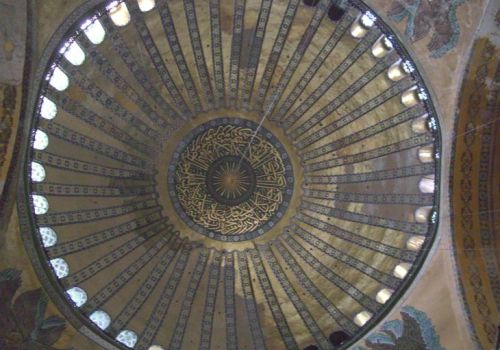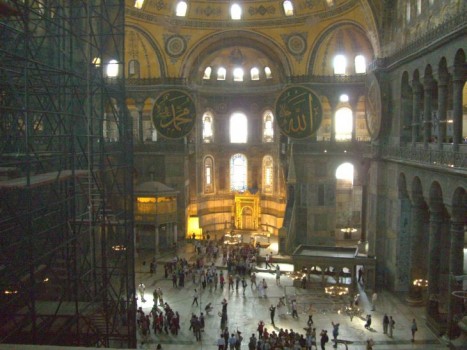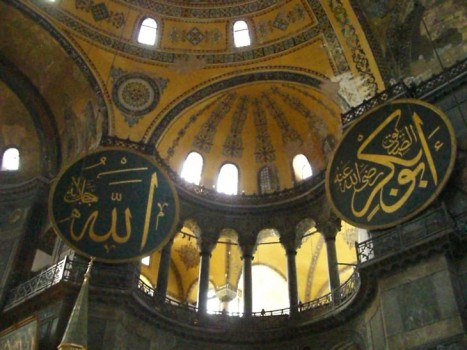-

There are very few buildings and architectural monuments that manage to move me emotionally. Istanbul’s ancient Hagia Sofia is a clear exception: a place where history, architecture and religion have clashed over and over again. It is a defining building for this part of the world, and a beautiful one at that.
The current Hagia Sofia dates back to the 6th century, even though there has been a Hagia Sofia at this site since 350 AD. It is famous not so much for its exterior as for the interior – the way the central dome is constructed represents a revolution in architecture. Walking in, you get the sense of being inside a giant hall in a separate universe, completely apart from the outside world. It was the main church for the Byzantine empire: a central place in the first thousand years of Christian history.
In 1453, the city fell (or was liberated, depending on how you look at it) to the Turks, and Hagia Sofia was converted into a mosque. I have mixed emotions about this: the black and golden shields that hang in there so obviously do not belong in that space (they were added in the 19th century), and the Arabic script painted inside the main dome look clumsy and out of place. Ironically, the conversion into a mosque probably saved Hagia Sofia, as the church had fallen into a state of serious dilapidation during the last decades of the Byzantian empire. In 1935, the government declared it to be a museum, and I believe this is the best solution for this incredible building. If you want to see an actual example of Islamic architecture, the stunning Blue Mosque is just across the street.
Hagia Sofia is a stunner.
No related posts.
Related posts brought to you by Yet Another Related Posts Plugin.
This entry was posted on Monday, June 7th, 2010 at 3:28 pm and is filed under Turkey. You can follow any responses to this entry through the RSS 2.0 feed. You can leave a response, or trackback from your own site.
-
Brady Stump
-
Marty
















